Guitar World Verdict
These Black Country Customs units offer the classic British sound of a Laney amp on your pedalboard, and if that’s a sound that works with the music you play, one of these will be a solid, practical purchase.
Pros
- +
Real amp in pedal form.
- +
60 watts of power.
- +
Practical footswitching.
- +
Speaker-simulated DI out.
- +
Headphone and aux sockets for practice.
- +
USB recording.
Cons
- -
You’ll need to find somewhere to fit the power supply on your ’board.
You can trust Guitar World
Whether you like the traditional style of guitar amp head and separate speaker cabinet or a more compact combo configuration, Laney has always had plenty of variety in its roster.
These days, though, the pedalboard amp has become a thing as some players make a move to a more flexible and easily transportable rig, something that the company addressed last year with its Ironheart Foundry Series IRF-LoudPedal, a 60-watt amp in a twin-footswitch pedal format.
Moving into 2024, Laney has added two new LoudPedals into the mix under its Black Country Customs (BCC) banner. The BCC LoudPedal Ironheart and LoudPedal Lionheart are both designed to be the tone engine of a flexible pedalboard setup with a feature set that replicates the original amp. Both are signature pedals, designed in collaboration with guitarists Tom Quayle (Lionheart) and Martin Miller (Ironheart).
The two new LoudPedals are identical in their feature sets, apart from a different function being assigned to one of their mini-toggle switches. Each is a 60-watt two-channel amp with a central footswitch to toggle between the two channels, a footswitch for reverb and another one for boost.
There’s a single guitar input, a loudspeaker output to connect to a standard guitar cab, and an XLR DI output (complete with impulse response if desired) to connect to PA, FRFR cab or front-of-house mixing desk in a live situation, or to studio gear for recording.
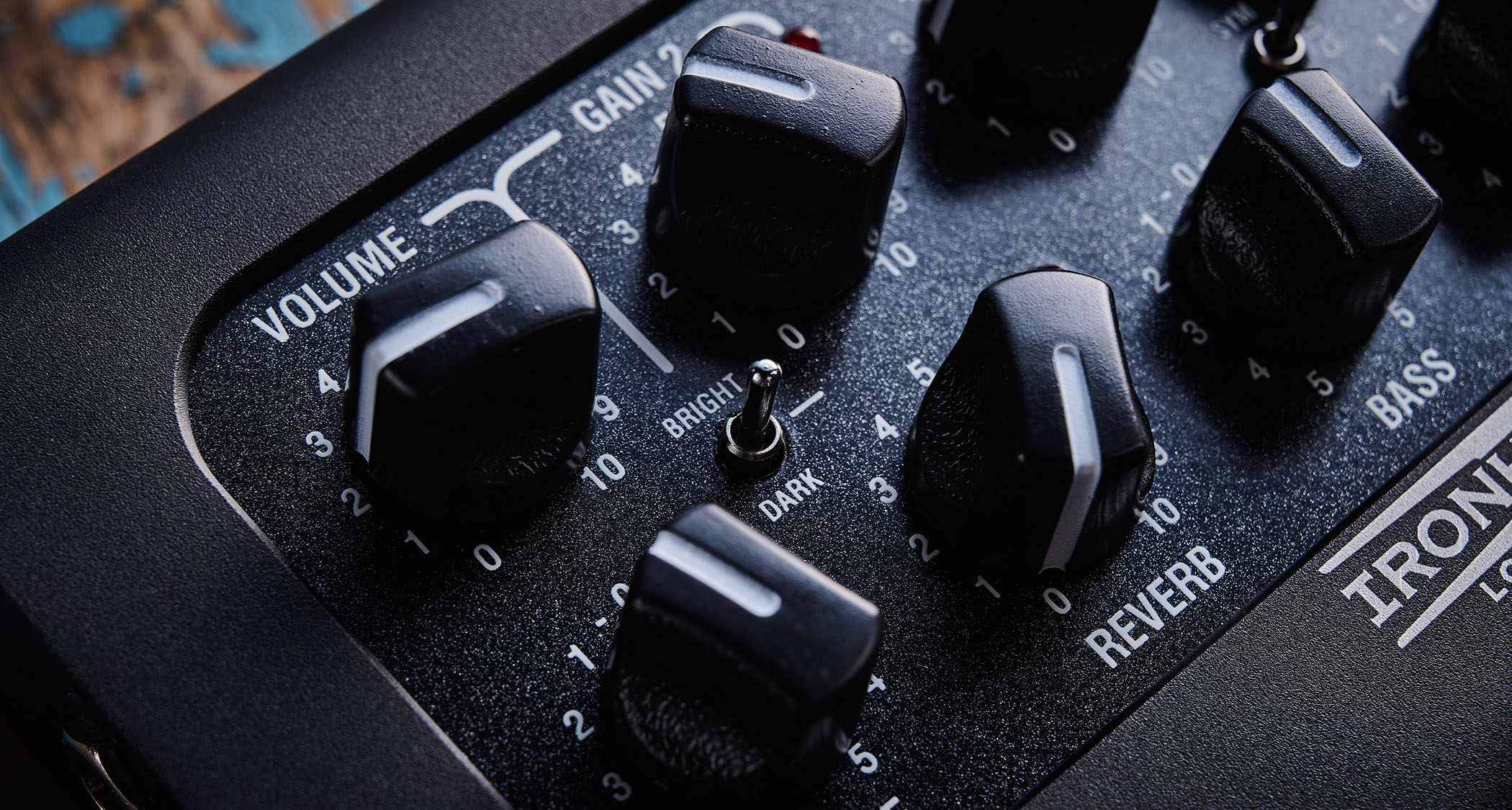
You also have a headphone output if you want to use the LoudPedal for some silent practice, maybe playing along to any music that you care to bring in via the aux input.
The USB connection is multi-purpose, hooking up to a computer running Laney’s LA·IR app so you can load your favourite IRs into the pedal, and it also functions as an audio output to connect to a DAW for recording, sending out two audio streams – one with and one without the cab emulation.
All the latest guitar news, interviews, lessons, reviews, deals and more, direct to your inbox!
The pedal is also equipped with MIDI sockets so the three footswitches can come under MIDI control or can be used to switch external devices. Further flexibility is provided by a send/return effects loop for adding other pedals into the signal chain.
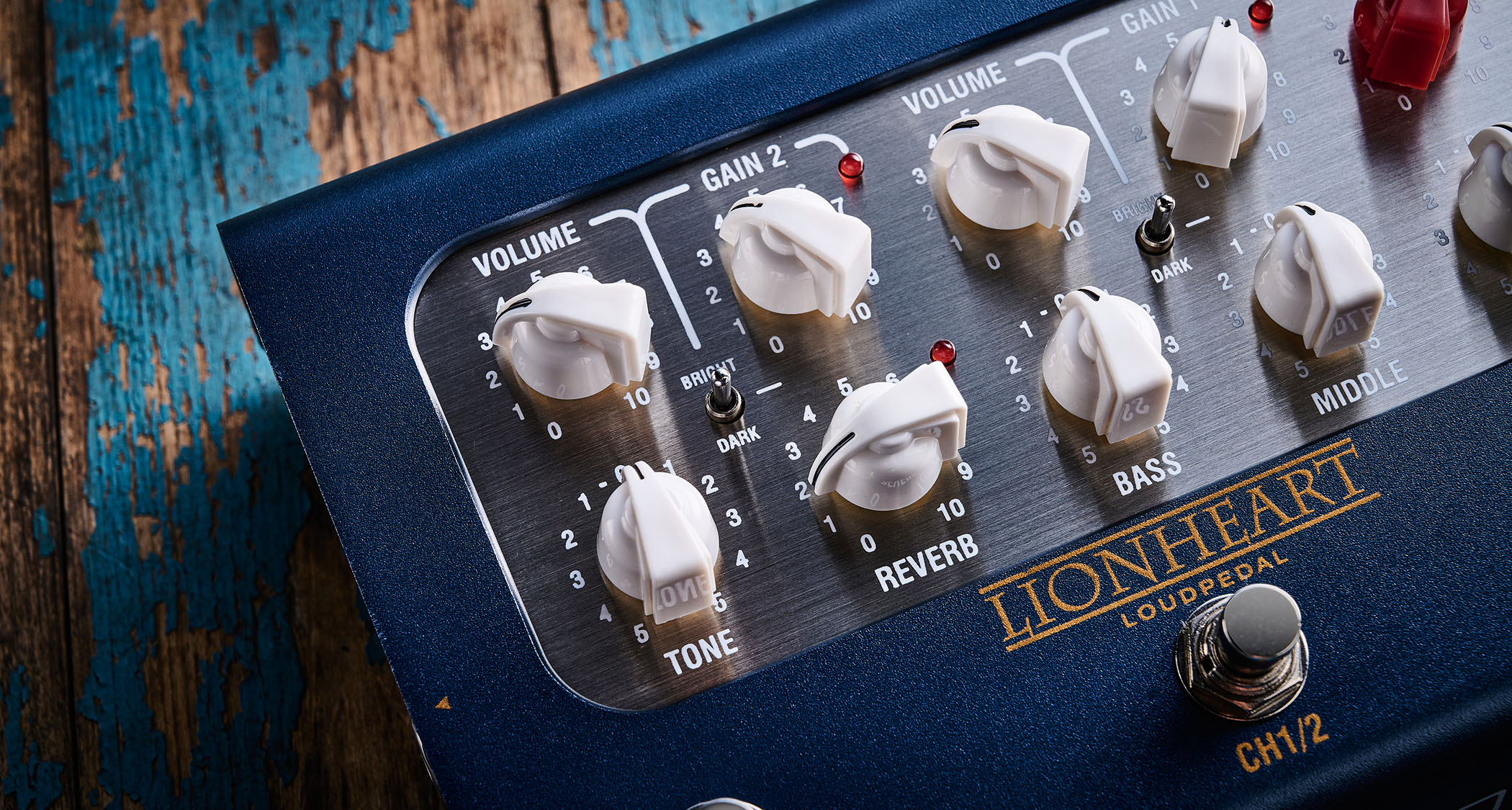
On the top panel are the controls for Channels 1 and 2 as well as single knobs for turning up the reverb and the boost level.
Both channels sport Volume and Gain knobs and a three-way toggle switch for Bright or Dark tone settings besides the neutral flat position, although on Channel 1 of the Ironheart that is replaced with a switch that offers three types of clipping.
EQ options are set for the whole pedal (rather than per channel) and there’s a Tone knob and more specific Bass, Middle and Treble controls.
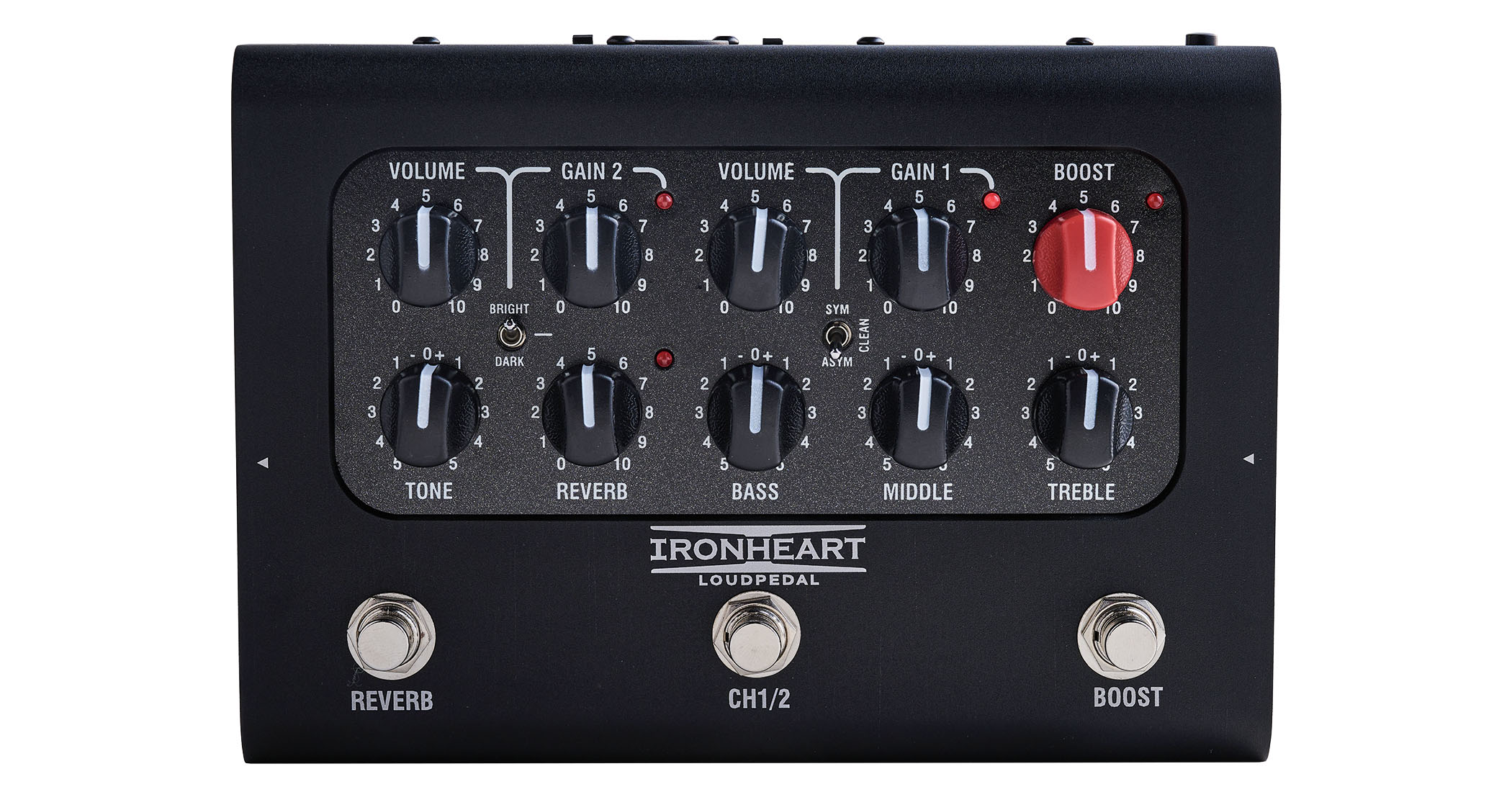
In Use
The two pedals are solid-state versions of two valve amps that are mainstays of the Laney brand and are designed to exactly recreate their sounds.
Although we weren’t able to do an A/B test with the amps, we can say that both sound really good and respond nicely to the push and pull of playing dynamics.
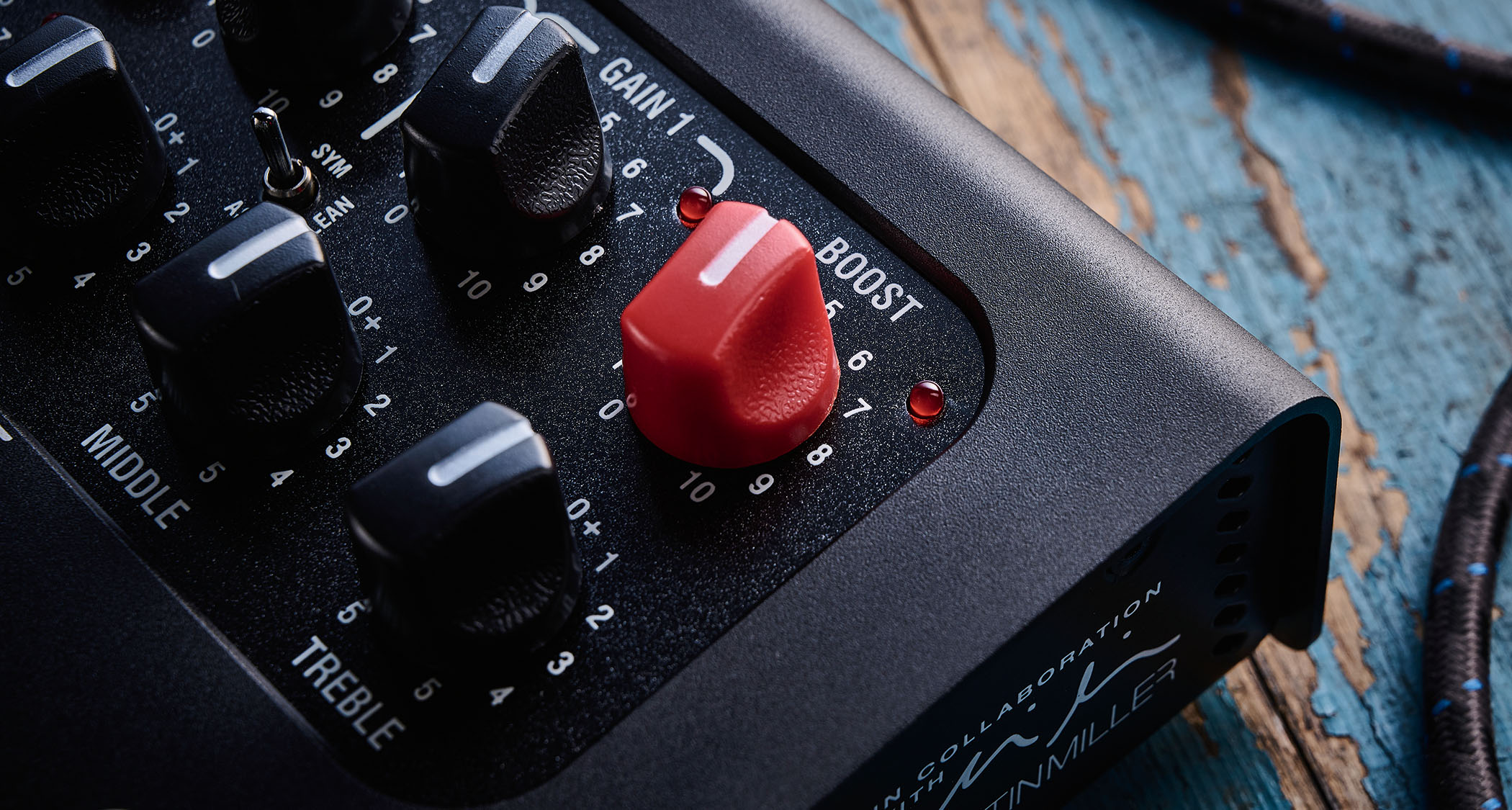
The Ironheart may have a reputation for being a modern high-gain amp suitable for metal players, but what you get here is actually surprisingly versatile, particularly with Channel 1’s three clipping options.
The Clean setting with its soft clipping can give you a really practical clean sound, plus some early break-up sounds further along the Gain knob’s range. You also get symmetrical clipping for aggressive high‑gain distortion, or Asymmetrical clipping for distortion that retains more clarity and dynamics.
Channel 2 gives you a full gain range, from clean to full-on distortion, that you can push even further by bringing the Boost in. The whole twin-channel setup gives you plenty of options for stage use with maybe one channel set for clean and the other for more driven sounds, plus the option of adding boost to either.
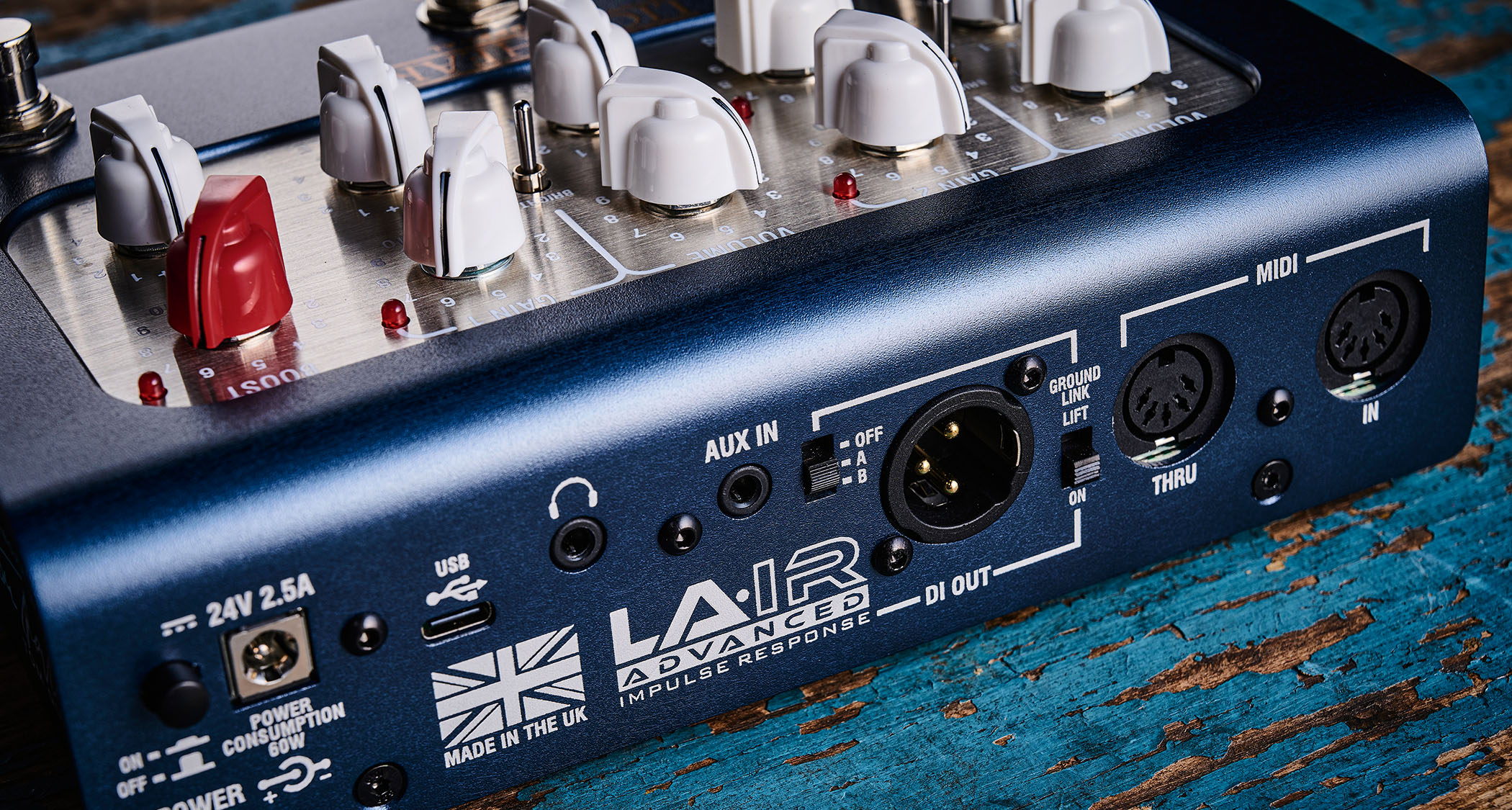
With all the same advantages conferred by the twin-channel setup, the Lionheart has more of a classic vintage vibe featuring two identical channels with great range, running from pristine glassy cleans through to fully saturated.
There’s loads of tonal variation available via the Bright/Dark switch in the first instance, the Tone knob putting the top-end presence in the right ballpark and the other three knobs for shading, while the Reverb (a spring emulation based on the Secret Path pedal) does a fine job in adding airiness.
If you’re using the XLR output, the pair of IRs that come as standard with each pedal are nicely chosen to complement the amp section, but there’s massive scope for sonic tailoring via the LA·IR app
If you’re using the XLR output, the pair of IRs that come as standard with each pedal are nicely chosen to complement the amp section, but there’s massive scope for sonic tailoring via the LA·IR app, which not only lets you load IRs of your choice but also provides powerful eight-band parametric EQ to precisely shape them.
The effects send offers another way to use the pedal, too: in front of your amp as a boost and distortion stompbox, although it would have to be an always-on pedal as there’d be no option to bypass it unless it was in the loop of a switcher.
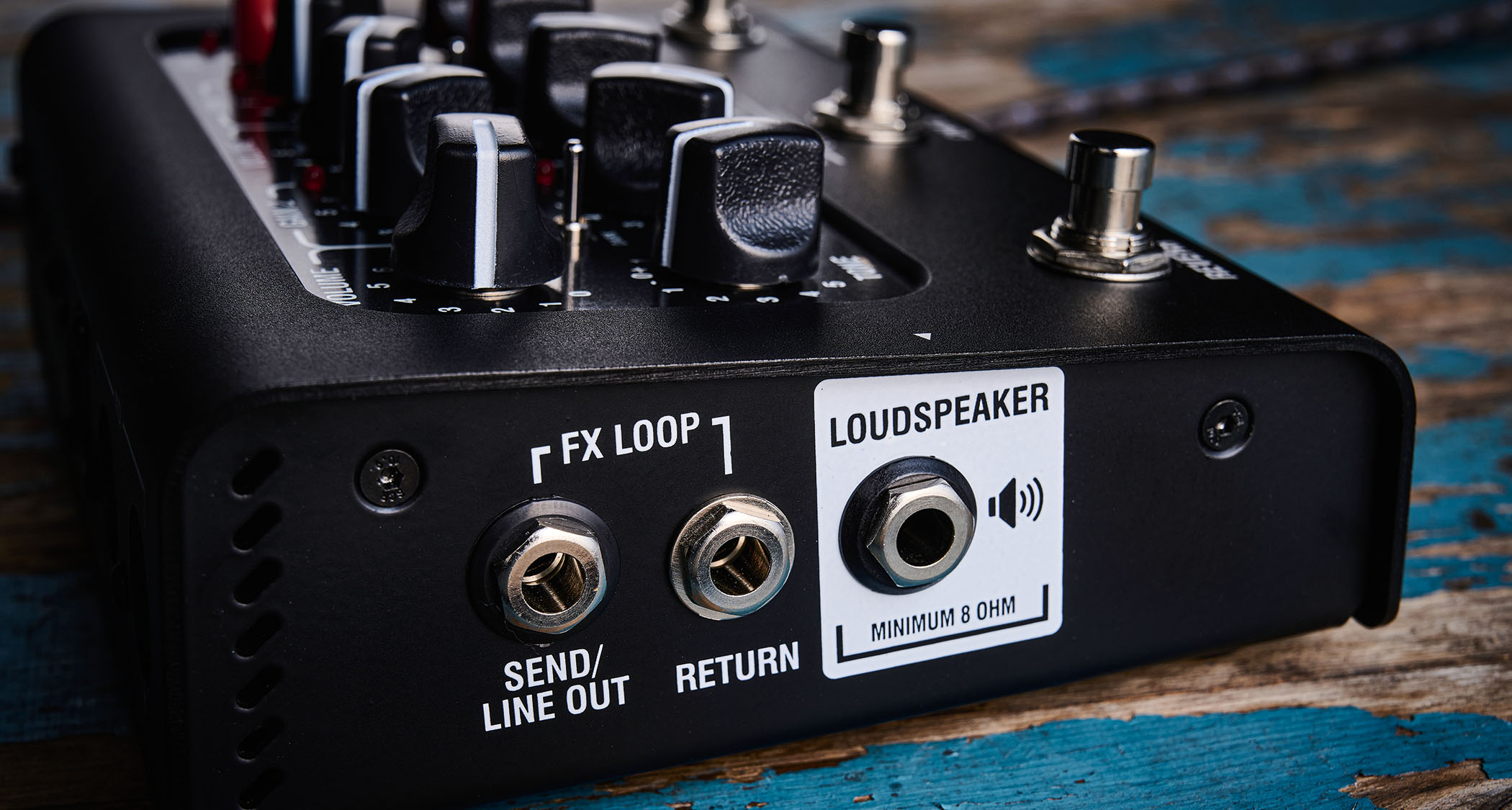
Verdict
In general, a pedalboard amp has plenty going for it in terms of convenience and portability.
These two certainly tick those boxes but also have a great deal of flexibility due to a feature set that offers a host of options for different methodologies in live work, recording and practice. What they don’t have is the wide range of different amp sounds you might find in an amp modeller, but that’s not necessarily a bad thing.
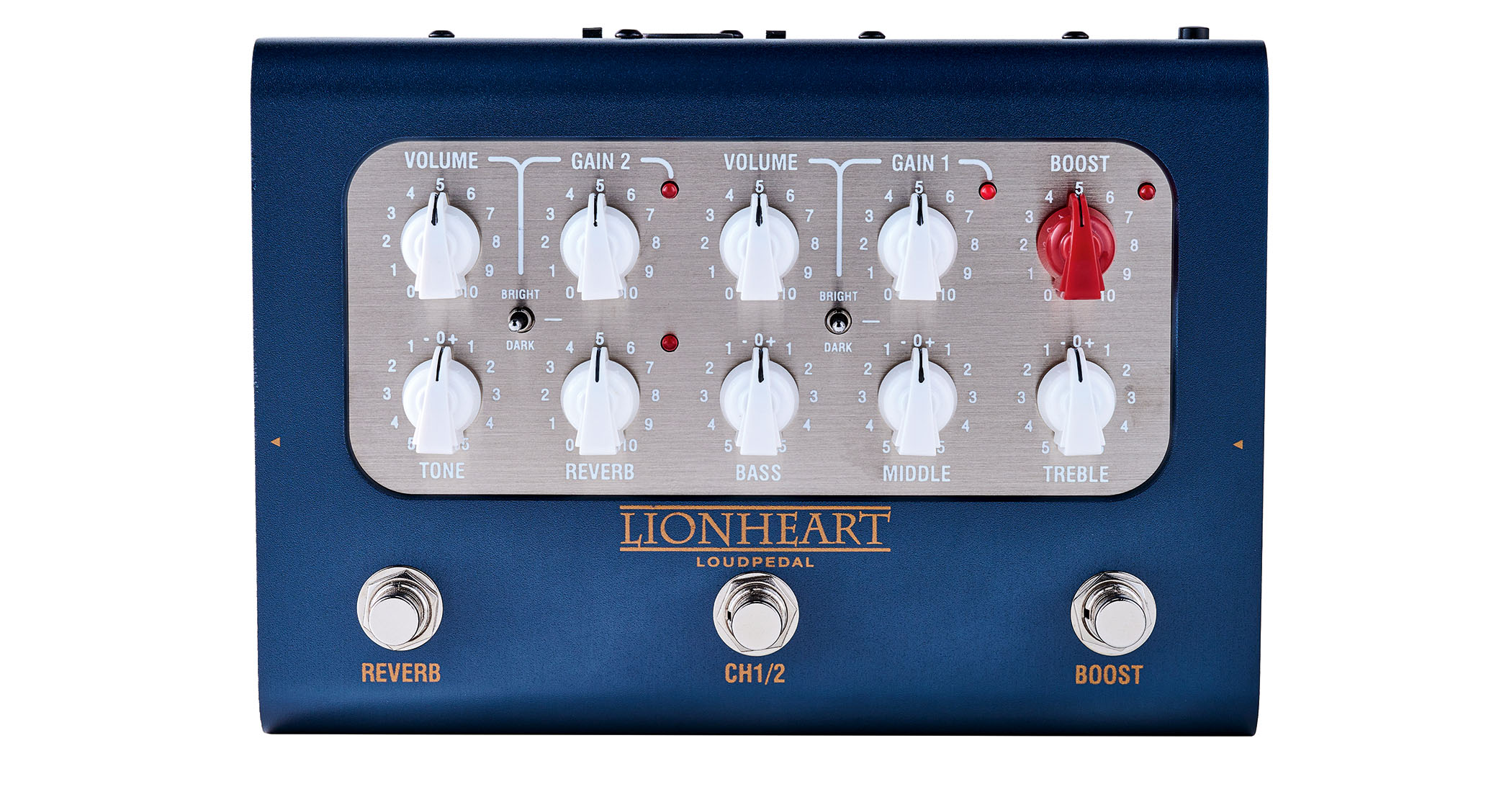
There will be no option paralysis here and you’ll have an amp that you’ll quickly get to know inside out, allowing you to get the best out of it – all hands-on for quick tweaks with no menu-diving.
What you will undoubtedly be getting is the classic British sound of a Laney amp, and if that’s a sound that works with the music you play, one of these will be a solid, practical purchase.
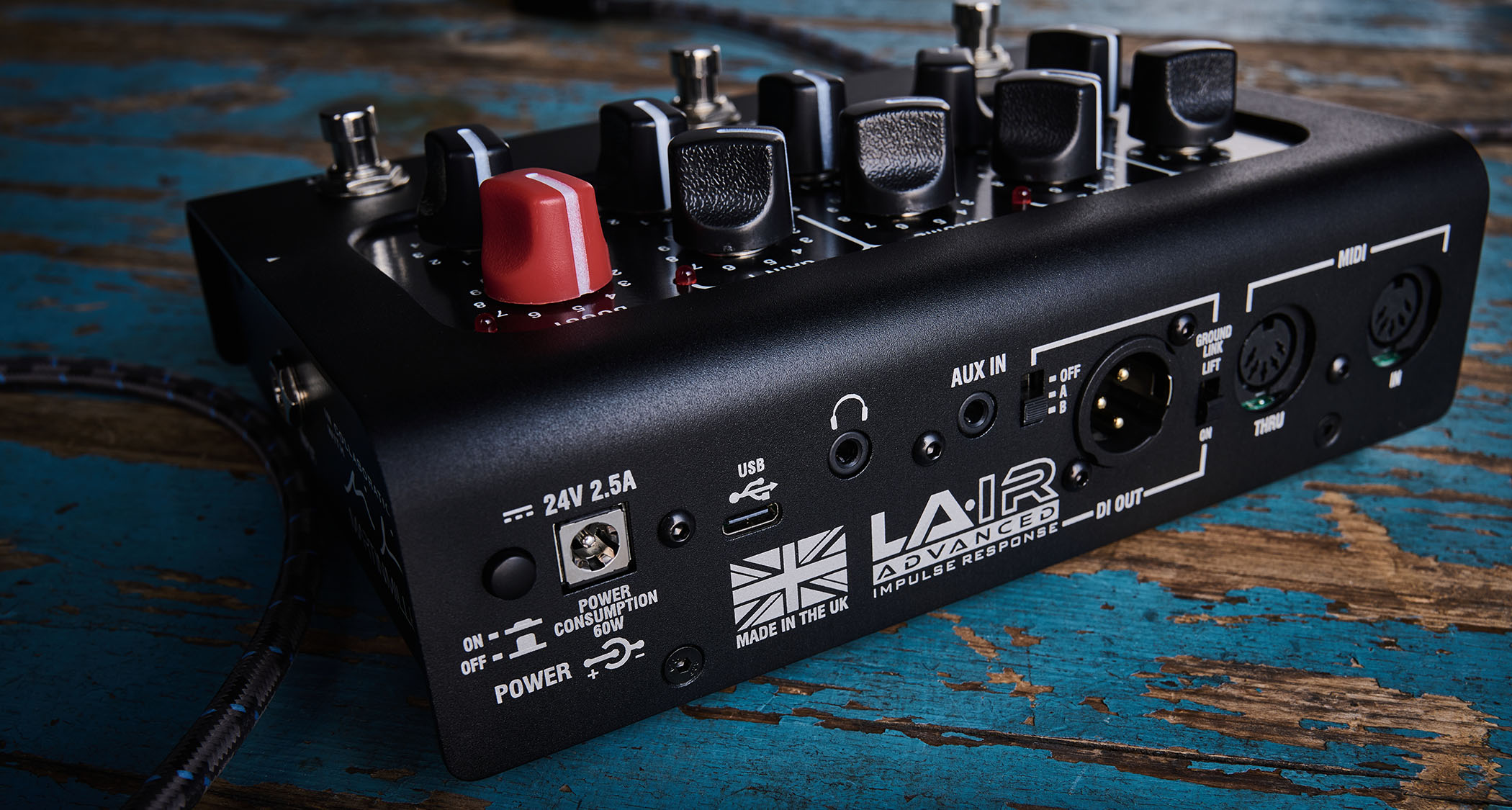
Specs
- PRICE: $499/£399 each
- ORIGIN: UK
- TYPE: Pedalboard amplifier
- FEATURES: 2x channels, 60W power output, speaker emulated DI output, footswitchable boost and reverb, USB recording facility, FX loop
- CONTROLS: Volume 1, Gain 1, Volume 2, Gain 2, Boost, Tone, Reverb, Bass, Middle, Treble, Bright/Dark switch, Sym/Asym switch, (Lionheart has no Sym/Asym switch but has two Bright/Dark switches), Speaker sim switch, Ground Lift switch, Reverb footswitch, Channel 1/2 footswitch, Boost footswitch
- CONNECTIONS: Standard input, standard Send/Line Out, Standard Return, Loudspeaker Out, XLR DI Out, Aux In, Stereo Headphone Output, USB, MIDI In, MIDI Thru
- POWER: Supplied 24V adaptor 2.5A
- DIMENSIONS: 198 (w) x 142 (d) x 70mm (h)
- CONTACT: Laney Amplification
Trevor Curwen has played guitar for several decades – he's also mimed it on the UK's Top of the Pops. Much of his working life, though, has been spent behind the mixing desk, during which time he has built up a solid collection of the guitars, amps and pedals needed to cover just about any studio session. He writes pedal reviews for Guitarist and has contributed to Total Guitar, MusicRadar and Future Music among others.


